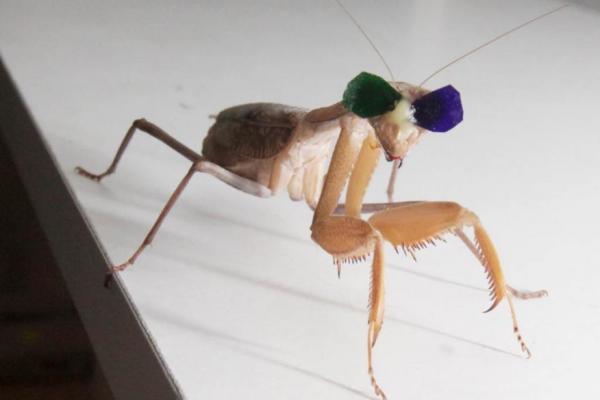
NEWCASTLE, England, Jan. 8 (UPI) — To test insect depth perception, researchers at Newcastle University outfitted praying mantises with tiny 3D glasses. The shades confirmed praying mantises’ ability to visualize three dimensions.
Research in the 1980s using prisms and occluders first showed mantises could process 3D imagery. But tools scientists were using limited the types of images they could show. The new 3D glasses enabled scientists to show the insects any and all images, opening up new research opportunities.
Scientists first tried to use miniaturized versions of modern 3D glasses, which employ polarization technology. This didn’t work, so researchers tried older 3D glasses, which use one red lens and one blue. Mantises can’t see red, so researchers created a tiny pair with one blue lens and one green.
When shown 2D film of small insects, mantises donning glasses affixed with beeswax were uninterested. But when the film was swapped for 3D footage, the mantises struck at the bugs.
“We definitively demonstrated 3D vision or stereopsis in mantises and also showed that this technique can be effectively used to deliver virtual 3D stimuli to insects,” researcher Vivek Nityananda, sensory biologist at Newcastle, said in a press release.
The feat was described in a new paper, published this week in the journal Scientific Reports.
“Despite their minute brains, mantises are sophisticated visual hunters which can capture prey with terrifying efficiency,” said lead study author Jenny Read, a professor of vision science. “We can learn a lot by studying how they perceive the world.”
“Better understanding of their simpler processing systems helps us understand how 3D vision evolved, and could lead to possible new algorithms for 3D depth perception in computers,” Read added.
Researchers plan to conduct further tests in order to model the neural networks and algorithms enabling 3D perception in insects.





